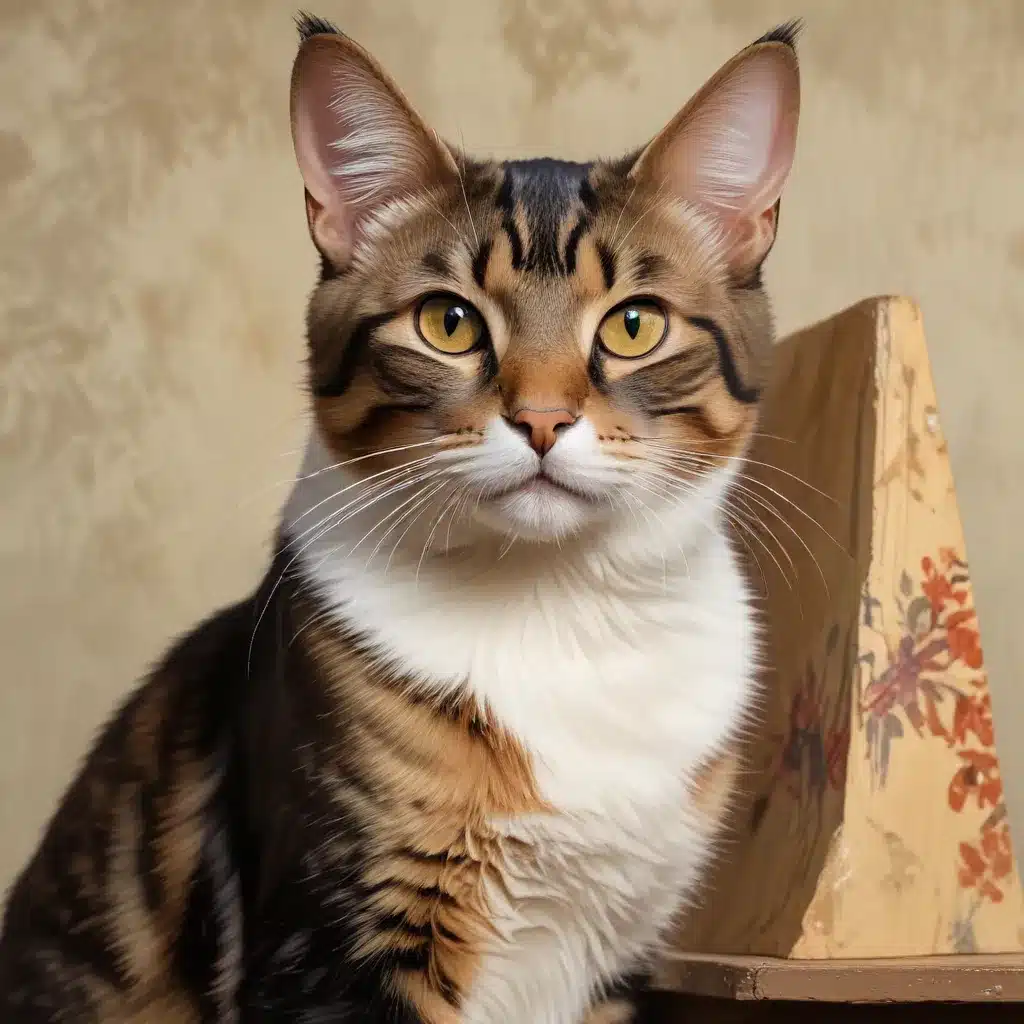
As a seasoned artist and educator, I’ve had the privilege of guiding countless students and patrons through the captivating world of pet portraiture. Among the most enchanting subjects are our feline friends, whose grace, personality, and alluring features present a unique challenge and joyful opportunity for the artist.
Capturing the Essence of Your Feline Muse
The key to creating a compelling feline painting lies in your ability to go beyond simply rendering the physical likeness and instead capture the very essence of your subject. Cats are complex creatures, often aloof yet endearing, with a range of moods and behaviors that can be challenging to translate onto the canvas.
To truly do justice to your feline muse, begin by observing your cat’s unique mannerisms and expressions. What is the particular tilt of their head when they’re curious? How do their eyes narrow when they’re content? How do they carry themselves when stalking prey versus lounging in a sunbeam? Pay close attention to these nuanced details and let them guide your artistic interpretation.
Mastering Feline Fur and Anatomy
One of the most striking features of cats is their luxurious, textured fur. Rendering this fur realistically requires a keen eye for color, value, and the interplay of light and shadow. Start by establishing a solid foundation in feline anatomy, understanding the underlying muscle structure and skeletal framework that gives shape to the fur.
Consider using reference photos of your cat or other feline models to study the patterns and gradations of light on the coat. Experiment with different media, such as oils, acrylics, or even soft pastels, to capture the soft, fluffy appearance of the fur.
A helpful technique is to break down the fur into distinct tonal areas, using layers of transparent washes or crosshatching to build up the depth and variation. Pay close attention to the directional flow of the fur, as well as any areas where the skin is visible through the coat.
Mastering Feline Expressions and Personalities
Cats are renowned for their captivating expressions, from the disdainful side-eye to the content, half-lidded gaze. Capturing these nuanced expressions is crucial to bringing your feline painting to life.
Study the position of the ears, the angle of the eyes, and the subtle shifts in the mouth and whiskers to convey your cat’s mood and personality. Experiment with different lighting scenarios, as the way the light hits the face can dramatically alter the perceived expression.
Consider the overall body language as well, as cats often communicate through the positioning of their tail, the arch of their back, and the tension in their muscles. Observe your feline subjects closely and take notes on how their expressions and body language shift in response to different stimuli.
Incorporating Symbolic and Spiritual Associations
Cats have long held a special place in art, mythology, and culture, often associated with themes of mystery, independence, and even the divine. As you approach your feline painting, consider incorporating symbolic or spiritual elements that resonate with the unique qualities of your subject.
For example, you might depict your cat in a regal, almost goddess-like pose, evoking the ancient Egyptian reverence for felines. Or you could explore the more mischievous, playful side of cats, incorporating whimsical elements that capture their curiosity and sense of adventure.
By tapping into the rich tapestry of cultural and mythological associations, you can imbue your feline painting with deeper layers of meaning and significance, making it a truly captivating work of art.
Honing Your Artistic Process
As with any genre of painting, the path to mastering feline portraiture is paved with dedicated practice, experimentation, and a willingness to learn from both successes and failures.
Start by building a diverse collection of reference materials, including photographs, sketches, and even video footage of your feline subjects. Regularly observe cats in your own home or in public spaces, taking note of the subtle nuances in their movements and expressions.
Experiment with different media and techniques, from the bold, expressive strokes of oil paint to the delicate, layered washes of watercolor. Embrace the unpredictable nature of the creative process, allowing for happy accidents and unexpected discoveries along the way.
Most importantly, remember to approach your feline paintings with a sense of joy and playfulness. Cats, with their aloof yet endearing personalities, have a way of captivating our hearts and imaginations. Tap into that sense of wonder and let it guide your artistic journey.
Elevating Your Feline Paintings
As you continue to hone your skills in feline portraiture, consider incorporating additional elements that can elevate your paintings to new heights. Experiment with unique compositions, such as dramatic close-ups or unexpected perspectives that challenge the viewer’s perception.
Explore the use of symbolism, metaphor, and narrative elements to imbue your paintings with deeper meaning. Perhaps your feline subject is depicted in a contemplative pose, evoking a sense of inner wisdom, or in a whimsical, playful scene that captures the joyful essence of cat-like curiosity.
And don’t forget the power of color! Cats’ fur can come in a dazzling array of hues, from the rich, velvety blacks to the vibrant, kaleidoscopic patterns of the tabby. Experiment with bold, contrasting palettes or subtle, harmonious color schemes to create paintings that captivate the eye and stir the imagination.
By approaching your feline paintings with a keen eye, a deep understanding of your subject, and a willingness to push the boundaries of the medium, you can create works that truly capture the essence of our feline companions. So, grab your brushes, embrace your inner cat whisperer, and embark on a journey of Paw-Painted Perfection.